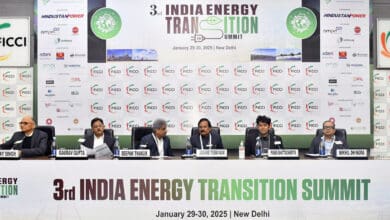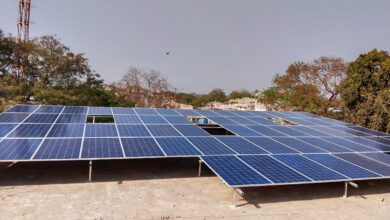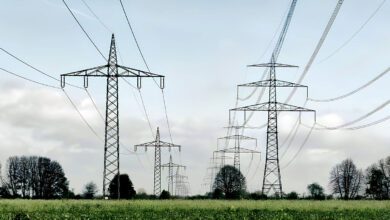In a bid to tackle climate change and bolster sustainable energy practices, the Union Minister for Power and New & Renewable Energy recently unveiled a comprehensive set of initiatives by the Ministry of Power to curtail carbon emissions from power projects across the nation.
One pivotal approach in the Ministry’s arsenal is the implementation of the Perform, Achieve and Trade (PAT) scheme – a market-based mechanism designed to augment energy efficiency in large, energy-intensive industries, particularly Thermal Power Stations consuming over 30,000 tonnes of oil equivalent (toe) annually. Covering 226 Thermal Power Stations with a cumulative capacity of approximately 197 GW, the scheme mandates a three-year cycle for these stations to reduce their Net Heat Rate. This, in turn, results in a substantial cut in coal consumption and, consequently, a noteworthy reduction of around 27.51 million tonnes of CO2 emissions, as evidenced by the 2020-21 figures.
Furthermore, numerous Thermal Power Plants (TPPs) have embraced cutting-edge technologies, transitioning from subcritical to supercritical, and now to ultra-supercritical technology. This shift not only enhances operational efficiency but also significantly reduces both coal consumption and emissions. As of October 31, 2023, a substantial capacity of 63,830 MW (92 units) of Supercritical/Ultra-supercritical units has been commissioned.
In a commendable move towards sustainability, the Ministry has retired a capacity of 8,059.92 MW, decommissioning 99 units of inefficient and outdated thermal power generation units between January 2018 and October 15, 2023. Additionally, a policy on Biomass Utilization for Power Generation through Co-firing in Domestic Coal-based Power Plants was instituted on October 8, 2021, mandating the use of agro residue-based biomass in conjunction with coal for thermal power plants.
The country has also made significant strides in diversifying its energy mix, with 186.46 GW capacity hailing from non-fossil fuel-based energy resources as of October 31, 2023, constituting 43% of the total power generation capacity. This includes 178.98 GW from Renewable Energy and 7.48 GW from Nuclear Power. The government aims to achieve 50% of its installed power generation capacity from non-fossil sources by 2030.
Noteworthy additions to the National Thermal Capacity, amounting to 25,091.91 MW, have been made to the grid since the fiscal year 2018-19. These additions encompass projects from both the Central, State, and Private sectors, reflecting a concerted effort to bolster the nation’s energy capacity while simultaneously reducing its carbon footprint.
In conjunction with these efforts, the Indian government has also undertaken various measures to promote renewable energy generation. These include allowing Foreign Direct Investment (FDI) up to 100%, waiving Inter State Transmission System (ISTS) charges for the inter-state sale of renewable energy, setting renewable purchase obligation trajectories, and establishing Ultra Mega Renewable Energy Parks. Schemes such as Pradhan Mantri Kisan Urja Suraksha evam Utthaan Mahabhiyan (PM-KUSUM), Solar Rooftop Phase II, and the 12,000 MW Central Public Sector Undertaking (CPSU) Scheme Phase II further underscore the commitment to fostering a sustainable and resilient energy future.
Moreover, the government has invested in the development of Green Energy Corridors, facilitating the transmission and evacuation of renewable power. Initiatives such as the Green Term Ahead Market (GTAM) and standard bidding guidelines for tariff-based competitive bidding processes for renewable energy projects underscore India’s commitment to transitioning towards a greener and more sustainable energy landscape.













